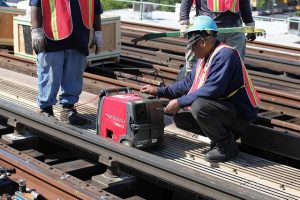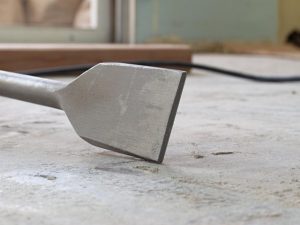SUPs are fairly cheap, so why build your own paddle board? Partly, for the pleasure of it! Imagine taking a little time to craft a DIY stand up paddle board, and then enjoying it for years to come. DIY paddle boards are inexpensive, too. This guide to building homemade stand up paddle boards takes you from start to finish. When you’re done, you’ll have a fantastic SUP that’s both attractive and fun to ride.
How to Make a Paddle Board the Easy Way
There are some very involved DIY SUP tutorials out there. While the end results are absolutely breathtaking and the finished wooden SUP is a vessel anyone would be proud to show off, the technical processes involved call for fine woodworking skills and a number of specialized tools. This guide takes a simpler approach to building DIY paddle boards, and the materials required should cost you about $50 or so. Let’s get started.
Set up your work area
This is a messy project. The adhesives and finishes need plenty of ventilation for safety, so be sure that you’re working in a space where there’s lots of fresh air and plenty of room to work. A garage is ideal.
Set up two or three sawhorses and top them with a simple platform such as a 4×8 piece of plywood or a few long, sturdy boards.

Materials
Process
Cut the foam insulation sheets in half lengthwise, first marking a guide line. You can use an Xacto knife, box knife, or bread knife for this step.
Cut the wide end off of one of the tubes of caulk and squeeze the adhesive out onto one of the foam pieces. Use the trowel to spread the adhesive over the entire surface of the foam piece. Use a second tube of construction adhesive if needed. With the fine notch section of the trowel, create a wavy pattern throughout the adhesive, and then lay the second section of foam on top. Line it up carefully so all the edges match as evenly as possible.
Place your sandbags or other heavy objects carefully on top of the upper piece of foam. Position them so that they apply even pressure to the entire surface. Once you’re satisfied, it’s time to let the caulk cure for 24 hours.
Repeat the caulk process, applying a layer over the upper sheet of insulation. Lay the third piece of insulation on top, set your heavy objects in place, and then allow the project to cure for another 24 hours. You can add the fourth piece of foam to the top if you like. This is advisable if the rider is a heavy person, or if you plan to have multiple riders on the same board. Don’t worry too much about the thickness here, because in the next step, you’re going to start the shaping process.
One of the biggest challenges when making DIY paddle boards is getting the shape right. We recommend that you spend a little time looking at paddle boards and getting a feel for the way they’re sculpted. Obtain an object to use as a template for creating the rounded shapes at the nose of the paddle board.
If you don’t have anything on hand, you can make a simple compass by attaching a screw to a point about three feet from the front edge, attaching a string to the screw, and attaching a permanent marker to the string. The string and marker should be just a touch under three feet so that you can draw a curve on the front of the board without going off the end. Don’t worry if this seems to be too wide. You can sculpt and narrow both sides of the nose as needed once you begin the sculpting process.
Use a long razor knife and a wood rasp to gradually sculpt away excess foam. Work slowly and try to ensure that both sides are the same. If your SUP is at all uneven, it will have a tendency to drift to one side or the other while you’re riding it.
Once you are satisfied with the shape of the board, put on your respirator and smooth the board out with the orbital sander. Just like working with wood, you can start with a higher grit and work your way down to a finer one.
Now it’s time for plywood. Cut the 4×8 sheets of plywood in half horizontally so you have 4 4×4 sheets of plywood. Reserve one piece for another project. Lay the three remaining sheets of plywood down end to end, with the surface you’d like to use for the top facing down. Lay the foam portion of the paddle board on top of the plywood with the top down. Use your permanent marker to trace the outline of the paddle board on the plywood.
Use a circular saw to carefully cut the plywood into shape. You now have three sections to use for your paddleboard’s deck.
Paint or stain the plywood as desired, thoroughly covering all surfaces (front and back). Be sure to top non-waterproof stains and paints with at least two layers of waterproof finish, and ensure that you allow the finishes to dry for at least 24 hours before moving on to the final step.
Your wooden SUP is almost finished! Open up another tube of adhesive and spread it on top of the foam paddle board keel. Apply the contents of another tube of adhesive to the underside of the plywood paddle board deck. Sandwich the two together, placing the plywood deck pieces on top of the keel and carefully lining them up before putting your weights in place. Use a lint-free towel or rag to wipe excess adhesive from the edges.
The last step in building your own paddle board is perhaps the hardest: Waiting for the final adhesive coat to cure! You’ll want to leave this in place for at least 24 hours, even if it feels fairly firm after a short amount of time. Once finished, grab a paddle and head for the beach to give your new paddle board a try!




